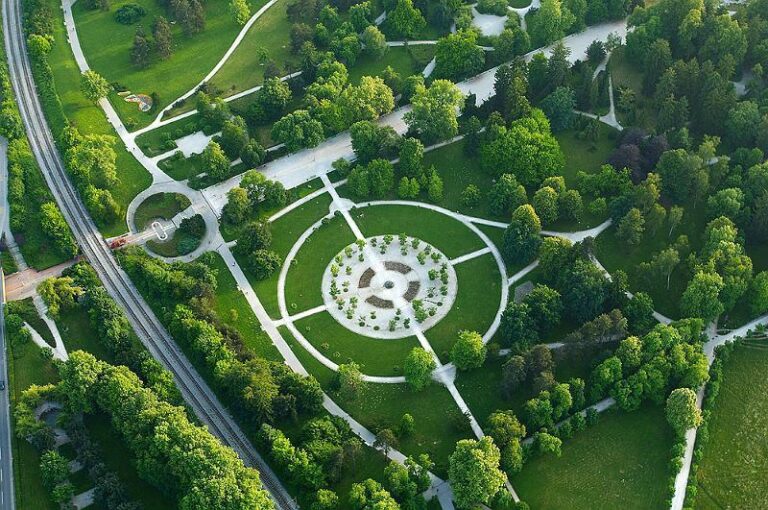SLOVENIA
Lies in the heart of Europe, where the Julian Alps overlook the Pannonian Plain and the Mediterranean meets the mysterious Karst. It borders Austria on the north, Hungary on the east, Croatia on the south and Italy on the west. Slovenia occupies a territory of about half of Switzerland and has a population of approximately 2,008,516 (30 June 2006). It is a member of the European Union – its currency is the euro, and so is NATO. The capital Ljubljana is at the heart of the national territory.
Half of Slovenia is overgrown with forest – it is the third most forested country in Europe (after Finland and Sweden). Pastures, gardens, orchards and vineyards are also spread across Slovenia. About 11 percent of its territory is protected. The most important protected areas are the Triglav National Park, the Škocjan Caves, which were included in the UNESCO World Heritage List in 1986, the Sečovlje Salt-pans and the Cerknica Lake, classified as Ramsar wetlands.
In Slovenia, a land of incredible contrasts, you can ski in the Alps, swim in the Adriatic Sea, discover the Karst cave world, enjoy a refreshing bath at a thermal spa, learn about history in a vibrant medieval town and, not far away, stroll through the virgin forests or vineyards, wineries.
Ljubljana
Ljubljana, the capital, is a perfect example of this mix of German, Mediterranean and Slovenian culture. The old town is dominated by buildings in the Baroque, Renaissance and Secessionist style, and overlooks a medieval castle. Walk through the gardens of Tivoli Park to the National Museum of Contemporary History, where you will get acquainted with the history of modern Slovenia, and the most important exhibits in this museum are the fallen statue of Stalin and the reconstruction of the First World War trench.
Ljubljana is a city with a green soul. Thanks to its exceptional environmental awareness, Ljubljana has managed to preserve its green character to the present day. It proudly holds the title of European Green Capital 2016 and a host of international awards.
Ljubljana boasts an astounding per capita green space provision of 542 square metres, some of which can even be found in the heart of the historic city centre, which has been closed for car traffic since 2008.
The largest city park, Tivoli, leads to two wooded hills, Rožnik and Šišenski hrib, which offer a spider’s web of hiking trails. On the other side of the old town, Golovec hill stretches from the city centre to the Kodeljevo, Moste, Fužine and Rudnik districts.
Highlights of Ljubljana: Ljubljana Castle, National Gallery, The Dragon Bridge (This is possibly the most famous landmark in Ljubljana, and even though the bridge is small, it lived up to the hype: a large green dragon guards each of the four corners of the bridge), the cafés by river Ljubljanica are full and the paved roads are full of locals and tourists who stroll through the old city centre past Robb fountain and town hall.
Bled
Bled, with its surroundings and all its natural beauties, is the real pearl of Slovenia. The already recognizable image of Bled with its castle above the town, lake and island in the middle attracts many tourists all year round. Embraced by the picturesque mountains, it stands proudly in the middle of an alpine lake. With its charm, it has long been a symbol of the city that is now being discovered by new tourists, the modern lifestyle, and the old ones are rediscovering it. The unique beauty of the lake and its surroundings, the perfect geographical location on the southern side of the Alps near the Austrian and Italian borders make Bled an ideal destination for tourism. The quiet surface of the lake reflects the peaks of the July Alps, and the church on the island, dating from the 16th century, has a bell that is believed to fulfill all desires. The reason why many visitors return year after year to Bled certainly lies in its diverse offer. With a mild climate and beautiful surroundings, guests can enjoy sports. Guests in Bled can enjoy lake rides, walking on well-groomed trails, hiking, fishing, horseback riding, cycling or carriages. The forested slopes of the Jelovice and Pokljuka mountains represent the perfect setting for this place. During bright days, snow-covered peaks of the Julian Alps can also be seen. The surrounding area of Bled is known for its unique natural beauties, the most beautiful of which is the Vintgar River valley.
Lake Bled lake surface: – 1,438 km2, maximum depth – 30, 6 m, maximum width – 1.380 km, maximum length – 2.120 km, volume – 25.69 mil. m3. 19 species of fish live in the lake.
It is the only natural island in Slovenia where the medieval church of St. Mary is located. On a steep cliff above the lake is the old town of Bled, a place with a beautiful view of the lake and its surroundings.
Predjama castle
Natural elements seamlessly interwoven with manmade ones, the result of man’s work and nature’s creativity has created a pearl of medieval resourcefulness. The world’s largest cave castle, listed as one of the Guinness World Records, tells a picturesque story about the times when comfort had to give way to safety, and when the clatter of weapons would often drown out troubadours’ songs. It is so special and unique, it ranks among the ten most fascinating castles in the world, and so romantic that many couples choose it for their wedding vows.
The castle was probably built in the 12th century, but was first mentioned in the year 1274 with the German name Luegg. The owners of the castle were Patriarchs of Aquileia who named it in rough translation from the Latin Cave Castle in the Karst, the castle’s Slovene name, Predjamski grad means “Castle in front of the cave”. It was built in Gothic style on natural, protected site approachable, with difficulty, from just one side. The vassals under Aquilean authority were the Luegg (Jamski) noble family that expanded and fortified the castle.
Postojna cave
The Postojna Cave is one of the largest and most beautiful caves (caves) in Europe. It is located near Postojna, Slovenia. It is a system of underground corridors, trenches, galleries and halls over 20 kilometers long.
The Postojna Cave has so far been seen by an incredible 31 million visitors, making it the most visited tourist cave in Europe.
It was discovered long ago in 1818 when a resident found it by accident. The following year the Postojna Cave received the first visitors – tourists. Railway rails were laid in the pit in 1872, and torches and oil lamps were replaced with electric lighting in 1884. The Postojna Cave is still the only cave in the world to go sightseeing by train.
The majesty of the Postojna Cave evokes awe and admiration for what nature has built millions of years ago. You can’t help but think that this beauty was created “by itself” …
Portorose
Portorose is a city on the Slovenian coast and one of the largest tourist centers in Slovenia. Located in the Bay of Piran, in the northernmost part of the Adriatic, in a quiet cove. Portorose is mentioned back in Roman times, since 568 it was atacked by Longobard, Germans and Slavs. After that the Counts were settled there and it was made conecttion with Venice which was the lord of Adratic coast.
Portorose is known for its tourism, which has developed thanks to the mild Mediterranean climate, clean air and sea water.





